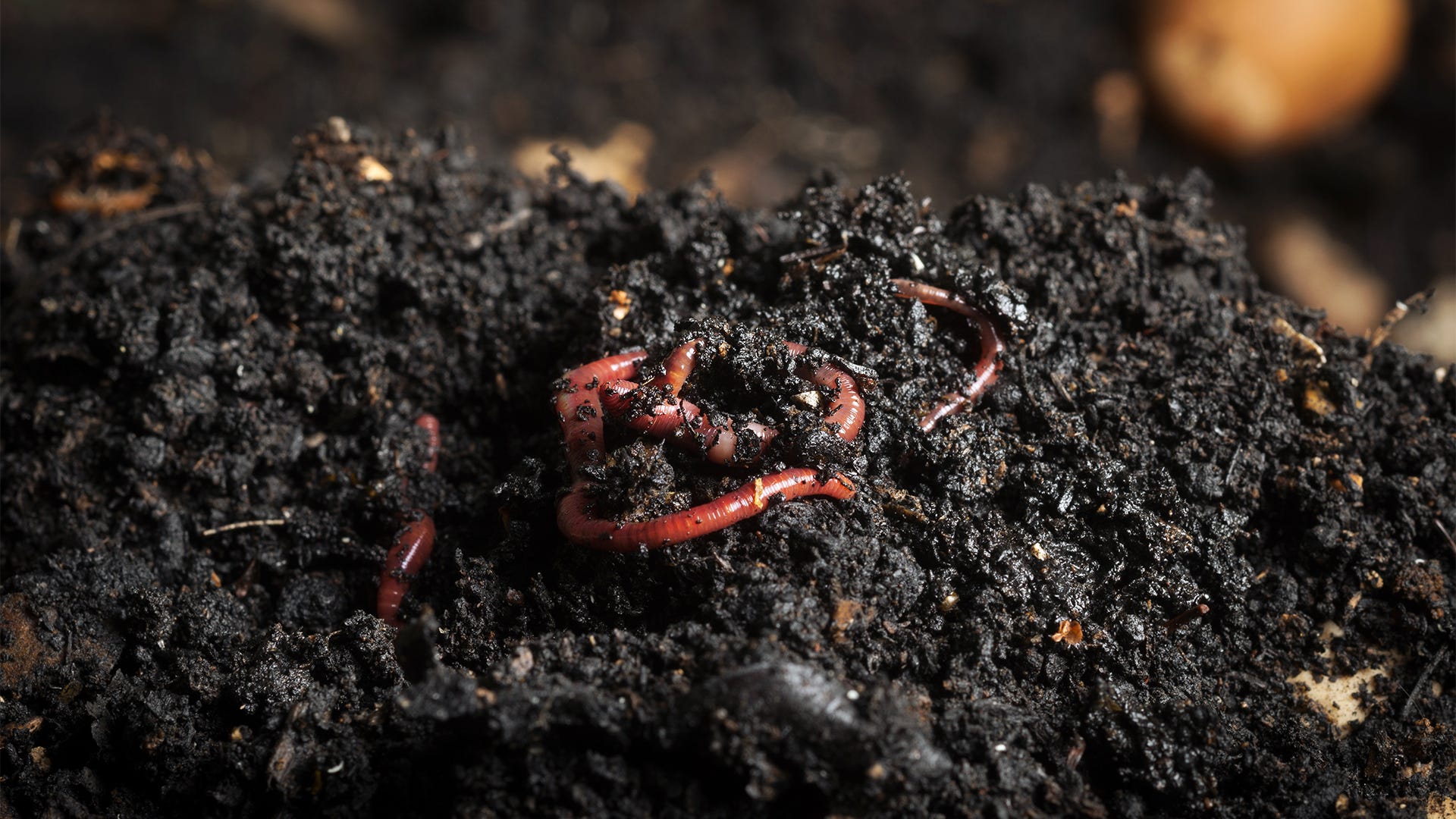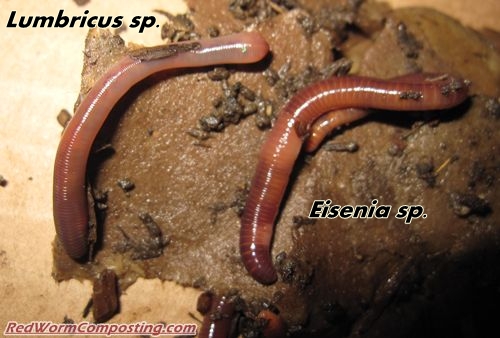Comprehending the Benefits of Red Wiggler Composting: How This Effective Method Changes Organic Waste Into Nutrient-Rich Soil Amendments
Red Wiggler composting, employing the species Eisenia fetida, offers an engaging method to organic waste monitoring, converting kitchen scraps and lawn particles into beneficial soil changes. This method not just enhances dirt fertility yet likewise addresses pushing ecological concerns, including landfill waste reduction and greenhouse gas emissions. As we explore the details of this procedure, the complex advantages it provides may reveal unforeseen understandings into lasting techniques and environmental equilibrium. Recognizing these measurements may prompt a reevaluation of how we perceive waste and its possible payments to a much healthier planet.
What Are Red Wigglers?
Red wigglers, scientifically called Eisenia fetida, are a types of earthworm that play a crucial role in vermicomposting systems. These worms are identified by their reddish-brown color, fractional bodies, and a distinctive capacity to grow in organic-rich atmospheres, making them optimal for composting applications - Red Wiggler Composting. Unlike their garden-dwelling equivalents, red wigglers like to inhabit the top layers of soil, where decomposing issue is plentiful
Usually measuring in between 3 to 4 inches in length, red wigglers have a high reproductive price, enabling them to increase swiftly under ideal conditions. They possess a special digestive system that permits them to process natural waste successfully, converting it right into nutrient-rich spreadings, which are extremely advantageous for plant development.
Their resistance to differing moisture levels and temperature ranges additionally boosts their energy in vermicomposting arrangements, making them a preferred selection amongst composting enthusiasts. In addition, red wigglers are cardiovascular organisms, which requires a well-aerated composting atmosphere, making certain reliable disintegration. Understanding the biological qualities and actions of red wigglers is crucial for optimizing their usage in sustainable waste administration techniques.

Advantages of Vermicomposting
Harnessing the power of vermicomposting deals a multitude of agricultural and ecological benefits. To start with, it dramatically lowers natural waste in land fills, therefore lessening methane emissions, a potent greenhouse gas. By drawing away food scraps and lawn waste to vermicomposting, we sustain an even more sustainable waste monitoring system.
Furthermore, vermicomposting boosts dirt health. The castings created by red wigglers are abundant in essential nutrients, microorganisms, and enzymes, enhancing dirt framework and fertility. This nutrient-rich amendment advertises robust plant development and increases water retention, lowering the demand for chemical plant foods.
Moreover, vermicomposting fosters biodiversity in the soil ecosystem. The intro of beneficial microorganisms from worm spreadings help in illness reductions and nutrient biking, developing a much healthier atmosphere for plants.
Economically, vermicomposting reduces the costs connected with chemical inputs and garbage disposal. Garden enthusiasts and farmers can cultivate high-quality fruit and vegetables at lower expenditures, adding to food safety and security and sustainability.
How to Start Composting
Starting a composting endeavor can be a great post to read rewarding and uncomplicated procedure. This will aid maintain a well balanced temperature, vital for the composting procedure.
Gather organic materials such as kitchen scraps, lawn waste, and shredded paper. Goal for a balanced mix of 'green' products, high in nitrogen (e.g., fruit scraps, coffee premises), and 'brown' products, rich in carbon (e.g., dried out leaves, cardboard) A proportion of roughly 2:1 eco-friendly to brown products is ideal.
Start layering your products, making certain ample air circulation by turning the pile routinely. This advertises cardio disintegration, speeding and minimizing odors up the process. Display wetness levels; the garden compost should seem like a moist sponge yet not overly wet.
Nutrient Account of Vermicompost
Composting, specifically with red wigglers, produces a nutrient-rich product called vermicompost. This organic modification is identified by its high focus of vital nutrients, making it an invaluable source for horticulture and agriculture. Vermicompost normally has elevated degrees of macronutrients such as phosphorus, potassium, and nitrogen, which are critical for plant link development. Furthermore, it supplies micronutrients like calcium, iron, and magnesium, fostering durable plant advancement and improving soil health and wellness.
The microbial activity present in vermicompost additionally enriches its profile, introducing helpful germs and fungi that advertise nutrient availability and uptake in plants. This biological component aids in reducing plant illness and enhancing dirt framework, causing enhanced water retention and aeration.

Environmental Influence of Composting
The ecological impact of composting, particularly through making use of red wigglers, is profound and diverse. This technique considerably decreases the quantity of natural waste sent out to garbage dumps, which consequently minimizes greenhouse gas emissions, especially methane-- a powerful factor to climate adjustment. By diverting natural products from land fills, red wiggler composting not just helps alleviate ecological destruction but also advertises sustainable waste management techniques.

Furthermore, composting adds to carbon sequestration, as the procedure catches co2 from the environment and shops it in the dirt. This all-natural process help in combating environment adjustment while enhancing the dirt - Red Wiggler Composting. Generally, red wiggler composting presents a sensible, eco-friendly remedy for waste management and ecological sustainability, advertising much healthier communities and a much more sustainable future
Final Thought
Finally, Red Wiggler composting acts as an effective approach for transforming natural waste into useful soil modifications. The procedure not only enhances soil fertility and structure but also mitigates environmental problems connected with garbage disposal. By utilizing Eisenia fetida, this kind of vermicomposting adds to enhanced biodiversity and supports lasting farming techniques. Inevitably, Red Wiggler composting plays a vital role in advertising much healthier environments and resolving the difficulties of climate modification.
Red Wiggler composting, utilizing the varieties Eisenia fetida, presents a compelling strategy to natural waste administration, converting kitchen area scraps and yard debris into valuable dirt changes. Unlike their garden-dwelling counterparts, red wigglers prefer to inhabit the upper layers of soil, where decomposing matter is plentiful.
The spreadings generated by red wigglers are abundant in crucial nutrients, microbes, and enzymes, boosting soil framework and fertility. The nutrient-rich byproducts of red wiggler activity improve soil framework, increase water retention, and promote biodiversity within the dirt ecological community.In verdict, Red Wiggler composting offers as an efficient approach for converting organic waste into useful soil modifications.